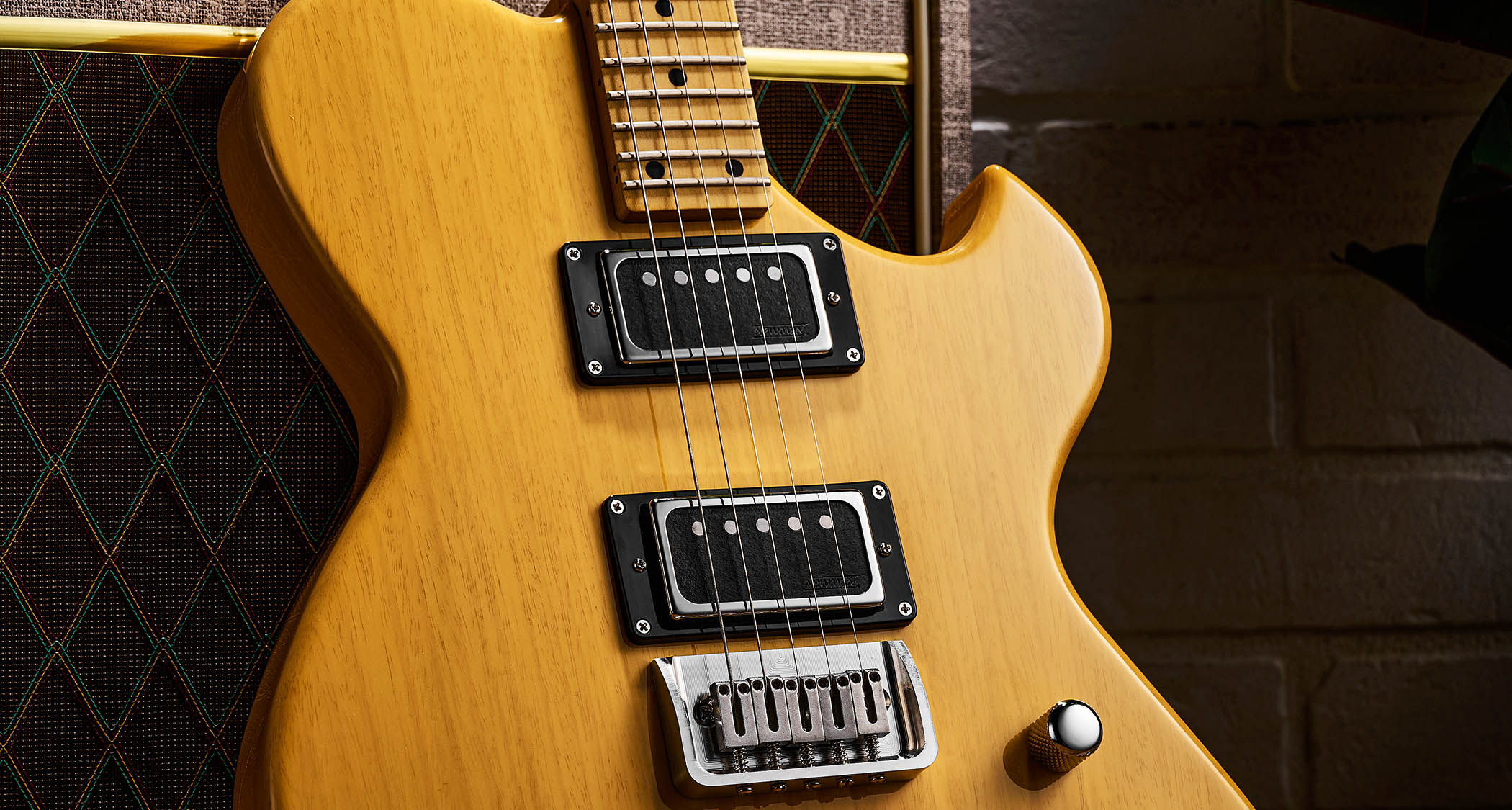As we documented in , he has a unique place in rock ’n’ roll history. A fledgling guitar maker and modder, he started touring with The Rolling Stones in 1972 as ‘guitar tuner’ and in conjunction with Keith Richards created a five-string open G-tuned electric that featured in many Stones shows during the early to mid‐’70s. Ted developed the design and, with initial funding from Keith, set up shop in Austin later in the ’70s where he and a small team began making guitars for local players and plenty of rock stars.
Ted passed away in 2016, but prior to this current Newman owner, Jeff Smith, worked with him to digitise the design, which Ted approved. Since then, Jeff has worked with numerous boutique makers to produce very limited versions of the modern Newman design and in 2023 started work with Cream T to co-produce a range of Newman models made here in the UK by Auden Musical Instrument Company. Cream T owner, Tim Lobley, wanted to start this new part of the Newman story with the unique electric five‐string you see here.

As you’d expect, compared with the pair of prototypes we played earlier in the year, the finished Newman 5 String looks and feels like a proper guitar should. This first run of just 12 instruments shares the same specification and there are no options: what you see is what you get. There’s an obvious Fender-like construction style, but the scale length is 628mm (24.
75 inches), not the longer 648mm (25.5 inches) you might expect. As with an increasing number of UK builds, the body is solid obeche, with its lightly striped, very straight grain visible through the Butterscotch finish; you can clearly see it’s a two-piece spread that’s superbly centre-joined.
But despite a generous edge radius, it’s a slab body with no comfort contouring. The original offset ellipse outline, however, is distinctive and very practical. The single cutaway, for example, allows full access to the upper of the 24 frets, the heel platform isn’t exactly contoured, but the treble-side edge is rounded; there’s no neckplate, either, and the four screws sit in very tidily recessed washers.
The slightly diagonally grained ‘rift-sawn’ neck has a similar straight grain to the body running down its length. Its tinted colour is very close in hue to the body, though the neck and fingerboard finish is lightly satin. The distinctive six-in-a-line headstock is back-angled, too, its outline mirrored by the black plastic truss rod cover.
There’s no scratchplate to confuse the unfussy style, and the through-strung bridge is another unique design, conceived by Jeff Smith and crafted in the USA. The walled base is machined from aluminium with five more generic-looking block saddles that appear to be stainless steel. It’s a classy design, but the edges of the aluminium base are left a little sharp and, if we’re honest, still feel a little ‘prototype’.
Also created exclusively for this new UK model is the pair of Newman . These are designed and made by Cream T and are controlled by the simple no-tricks master volume, master tone and a three-way toggle pickup selector placed just above the square, chromed-metal output jack plate. All in, it’s a pretty classy, pared-down build that comes with some case candy, a spare string set and a really good Newman-logo’d .
While the guitar has a very appealing light weight of 2.91kg (6.4lb), it’s obviously the narrow neck that presents the big difference here.
It actually looks a little narrower than it is because there’s seemingly little taper from the nut to the top 24th fret. So, at the nut it measures 41.82mm wide; at the 24th fret, it’s 49.
3mm. String spacing at the nut is 33mm and at the bridge is 41.5mm – which gives an individual string spacing of 10.
4mm. What does all this mean? Well, at the nut it’s only a millimetre thinner in width than a standard modern Fender six-string, and the individual string spacing is slightly wider. The bridge spacing is a little narrower than vintage Fender, too, but it really is minimal.
Depth-wise, we move from a pretty regular 21.5mm at the 1st fret to a pretty full-feeling 23.9mm by the 12th; the profile is a full-shouldered ‘C meets D’.
Fretwork, from a medium gauge with good height (approx. 2.6mm wide x 1.
2mm high), is very tidy, and there’s a little rolling to the edges, but a little more would certainly be welcome on the bass side. The supplied strings are 0.011, 0.
016, 0.018, 0.030 and 0.
042 gauge, which look heavier on paper than they feel. Don’t forget, the scale length is shorter than Fender and the top and bottom strings are dropped a tone. If you’re not familiar with open G tuning, that – combined with the relatively thin-width neck – will create quite an alien instrument.
But if you’ve got your open G style down, well, you’re in for a treat. You just can’t help bashing out or any of those classic Stones tunes that are powered by . The voicing of the guitar is near perfect.
The bridge sounds extremely Stones-y – it’s raunchy and defined but not overbright, with some midrange clout, and it’s dirty but with a clarity to the attack. The pickup mix is delicious and very -like, perfect for more laid-back tunes like , or with a harder pick attack it’s old-style snappy blues. The solo neck pickup loses a little of that sparkle, but it’s far from over-thick and proves a good base for bluesier slide licks, not least with a bit of gain boost.
Of course, it’s not just for Stones fans – plenty of bands and players have embraced open G, and while most of us have either done that on a retuned six-string, with or without the low E, the five-string concept here (after just a little adjustment) feels and sounds not so much like a new instrument but one that is very purpose built. Even if you don’t plan to hit a stage anytime soon, it works great as an overdub guitar – a real roots rock tool. As we said, an open-tuned five-string guitar is unique and will clearly have niche appeal, but it seems fitting to kick off this new project because creating exactly that all those years ago was the starting point of this story.
For this writer, finally playing a proper Newman – and a design that was signed off by Ted Newman himself before he passed away in 2016 – is really quite poignant, not least with its royalty level rock ’n’ roll DNA. Nevertheless, it’s far from a cheap date, amplified by the simplistic specification, especially for an instrument that may well only be used on a handful of songs in a set. Plus, unlike any half-decent SH or HH ‐style six-string that – like Keith – you can easily convert to a five string, you’re stuck here with just five strings if your open G excursions don’t prove as exciting as you’d hoped.
All that said, this initial 12-guitar run – with its unique design, pickups and bridge – sold out barely after the paint was dry (there are more coming!) with customers including a couple of very big names. Forgetting that cost, then, the feel, sounds and that distinctive outline are all really rather special: a very vibe-y homage to its original designer. Bless ya, Ted!.



















